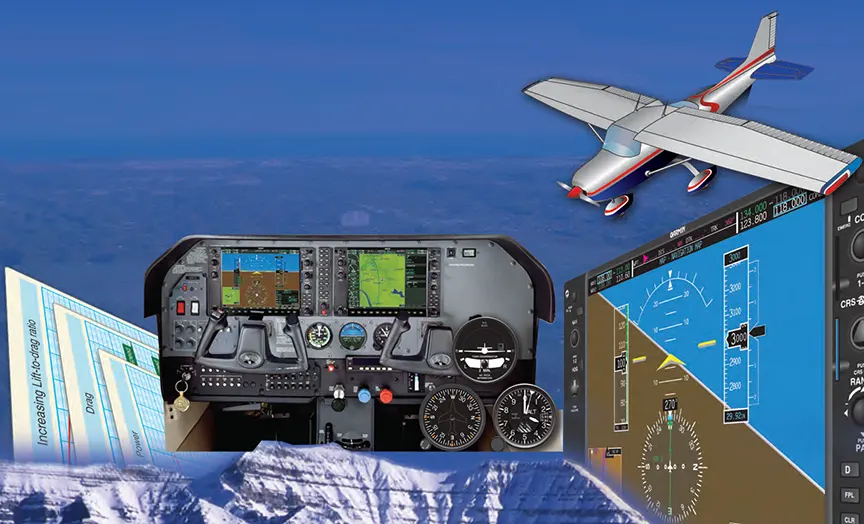
Airplanes operate in an environment that is unlike an automobile. Drivers tend to drive with a fairly narrow field of view and focus primarily on forward motion. Beginning pilots tend to practice the same. Flight instructors face the challenge of teaching beginning pilots about attitude awareness, which requires understanding the motions of flight. An airplane rotates in bank, pitch, and yaw while also moving horizontally, vertically, and laterally. The four fundamentals (straight-and-level flight, turns, climbs, and descents) are the principle maneuvers that control the airplane through the six motions of flight.
The Four Fundamentals
To master any subject, one must first master the fundamentals. An attempt to move on to advanced maneuvers prior to mastering the four fundamentals hinders the learning process. To be a competent pilot first requires that the pilot is skilled in the basics of fundamental airmanship. This requires mastery of the four basic flight maneuvers upon which all flying tasks are based: straight-and-level flight, turns, climbs, and descents.
Consider the following: a takeoff is a combination of straight-and-level and a climb, turning on course to the first navigation fix after departure is a climb and a turn, and the landing at the destination is a combination of airplane ground handling, acceleration, pitch and a climb.
The flight instructor must impart competent knowledge of these basic flight maneuvers so that the beginning pilot is able to combine them at a performance level that at least meets the Federal Aviation Administration (FAA) Practical Test Standards (PTS) or Airman Certification Standards (ACS), as appropriate. The importance of this phase of flight training cannot be overstated. As the beginning pilot progresses to more complex flight maneuvers, any deficiencies in the mastery of the four fundamentals are likely to become barriers to effective and efficient learning. Many beginning pilot difficulties in advanced maneuvers are likely caused by a lack of understanding, training, or practice in the four fundamentals.
Contents
- Effect and Use of the Flight Controls
- Attitude Flying
- Integrated Flight Instruction
- Straight and Level Flight
- Trim Control
- Level Turns
- Climbs and Climbing Turns
- Descents and Descending Turns
- Glides
